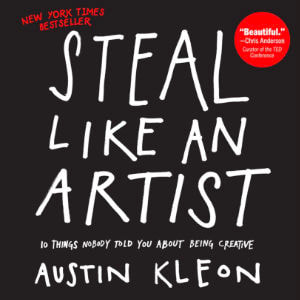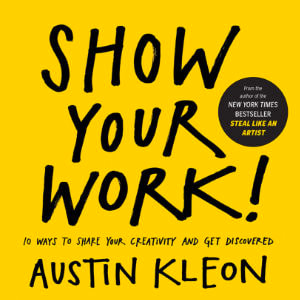- Home
- NEWS
-
PRACTICE
-
MARKETING
- How to write an Artist's Statement >
- How to write an Artist's Resume or CV >
- How to sign a painting, drawing or fine art print
- Business Cards for Artists
- How to write a press release for an artist
- The Private View Invitation
- Publicity for Juried Exhibitions
- Websites for Artists >
- Image & Video sizes for Social Media Sites
- How to be mobile-friendly
-
SELL ART
- FRAME ART
-
SHIP ART
-
COPYRIGHT
-
MONEY & TAX
- About + Help
- BANKING
The Pricing Conundrum....
4 pricing outcomes to AVOID!
|
(1) PRICES ARE TOO LOW You won't even cover your costs. Ultimately you won't have a business. More importantly, your pricing signals that you should only be regarded as a hobby artist. If your work doesn't have value, should you be selling it? |
(2) PRICES ARE TOO MODERATE You never make enough money. You may make a small profit, but you never seem to have enough money to expand your activities e.g.
|
|
(3) PRICES ARE OUT OF TOUCH WITH THE MARKET PLACE People probably won't buy your art. A lot of artists do not know the value of their art or understand the nature of a marketplace. They haven't done any research. They haven't found a benchmark for how much their type of actually sells for wherever they live. People typically buy art for a perceived fair price. If an artist prices too high or too low relative to a buyer's perceived fair price, it's unlikely they will sell much work. |
(4) PRICES ARE TOO HIGH People won't buy your art. You may limit the number of galleries prepared to sell your art in your locality. You will forever be anxious as to where the next sale is coming from There's a lot to be said for not giving up the day job until you can sell enough art and make enough money that walking away from the day job seems the logical next step. |
How to improve how you price your art
|
SO WHAT SHOULD YOU DO?
Find out more about the elements which influence pricing decisions. Your aim should be to identify the price which
A price does NOT equal a sale! The price of a piece of art that you see does NOT equate to the price paid for a sale achieved - unless the picture has a red spot or sold ticket next to it.
PLUS the price paid is not the same as the income earned. How much the artist gets depends on how and where art is sold - and the expenses involved in displaying and selling their art (eg framing; shipping costs; commission) |
WHAT YOU ABSOLUTELY MUST DO!
Benchmark your prices against sales achieved NOT the prices asked Find an effective benchmark for your art:
|
Options for pricing your art
This section reviews different options for pricing art in principle.
Do also look at How artists price their art - which reports trends between 2009 and the present day in terms of the use of different methods
Do also look at How artists price their art - which reports trends between 2009 and the present day in terms of the use of different methods
Outcome Orientated
|
Benchmarked
|
Input Orientated
|
Arithmetical
|
Irrational
PLUCKED FROM THE AIR
This is the "it feels like a $500 painting to me" approach. There is no obvious rationale other than a gut feel and/or a wish to avoid doing research to check out the current state of the marketplace.
However it's a much more reliable approach (although less scientific) if an individual has been doing their research and looking at prices being charged in the marketplace for art - and in particular has noted what prices art has sold for.
MY MOTHER/FAMILY/BEST FRIEND SAYS.....
Pricing based on the opinions of your nearest and dearest. Rarely, if ever, a sound basis for pricing art
This is the "it feels like a $500 painting to me" approach. There is no obvious rationale other than a gut feel and/or a wish to avoid doing research to check out the current state of the marketplace.
However it's a much more reliable approach (although less scientific) if an individual has been doing their research and looking at prices being charged in the marketplace for art - and in particular has noted what prices art has sold for.
MY MOTHER/FAMILY/BEST FRIEND SAYS.....
Pricing based on the opinions of your nearest and dearest. Rarely, if ever, a sound basis for pricing art
Steal Like and Artist by Austin Kleon
Rated an average of
This book started out as a speech to college students about things the author wish he'd known when starting out. It sets out ten transformative principles to help help readers discover their artistic side and build a more creative life. Paperback: 160 pages Publisher: Workman Publishing Company; First Edition, Later Printing edition: February 28, 2012 Steal Like An Artist
|
Show Your Work by Austin Kleon
BEST SELLER!
Rated an average of
Another 10 transformative principles for sharing your work and succeeding as an artist in a digital world. I've got a copy of this book and it's very definitely worth a read if you want to show your work. Paperback: 224 pages Publisher: Workman Publishing Company Published: March 6, 2014 Show Your Work!
|
ABOUT ART BUSINESS INFO. FOR ARTISTS
This website aims to provide a compendium of resources about the art business for artists. Please read "PLEASE NOTE"
It helps artists learn how to do better at being business-like, marketing and selling their art and looking after their financial security.
This website aims to provide a compendium of resources about the art business for artists. Please read "PLEASE NOTE"
It helps artists learn how to do better at being business-like, marketing and selling their art and looking after their financial security.
|
Copyright: 2015-2021 Katherine Tyrrell | Making A Mark Publications
- all rights reserved If you've got any suggestions for what you'd like to see on this website please send me your suggestion
|
PLEASE NOTE:
1) Content and the law change all the time. It's impossible to keep up with it if you're not working on the topic full time. 2) I research topics carefully. However, I am totally unable to warrant that ANY and/or ALL information is
|
3) Hence all information I provide comes without any LIABILITY whatsoever to you for any choices you make.
4) This website is FREE FOR YOU but not for me. Links to books are Amazon Affiliate links. Buying a book via this website means I get a very small payment which helps to fund and maintain this website. .I much appreciate any support your provide. Adverts are provided by Google AdSense - but the adverts do not mean I endorse the advertiser. |
- Home
- NEWS
-
PRACTICE
-
MARKETING
- How to write an Artist's Statement >
- How to write an Artist's Resume or CV >
- How to sign a painting, drawing or fine art print
- Business Cards for Artists
- How to write a press release for an artist
- The Private View Invitation
- Publicity for Juried Exhibitions
- Websites for Artists >
- Image & Video sizes for Social Media Sites
- How to be mobile-friendly
-
SELL ART
- FRAME ART
-
SHIP ART
-
COPYRIGHT
-
MONEY & TAX
- About + Help
- BANKING


